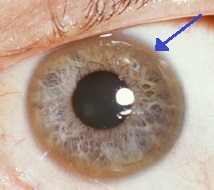Contents
One of the most characteristic signs of the disease is the pathological accumulation of copper in the area of various organs, tissue damage, especially the liver, problems of the nervous system, changes in the iris of the eye.
What is Wilson-Konovalov disease
The term Wilson-Konovalov’s disease is a hereditary pathology. It occurs when parents pass on a defective gene (ATP7B) to their child. The condition refers to autosomal recessive pathologies, that is, it occurs if each of the parents carries a similar gene in their cells and the child inherits both genes at once – from the mother and from the father.
This defective gene gives instructions for the synthesis of a protein that regulates the exchange and transport of copper within the body. With its defect, copper accumulates in the liver, concentrates in the nerve ganglia, and is deposited in the iris of the eye. Pathology is not common, it is sometimes very difficult to recognize, especially if there are no such patients in the family.
Causes of Wilson-Konovalov disease in adults
The key process in this pathology is the inheritance of the defective gene from the parents. It is located on the 13th chromosome and regulates copper metabolism.
On average, the body of adults contains approximately 50-70 mg of copper and it needs no more than 2 mg of the element per day, which comes from food.
The vast majority of the microelement (95%) is transferred in close association with the plasma protein, ceruloplasmin. It is constantly formed by the liver, and only about 5% of copper is transported along with albumin.
Copper is needed to participate in metabolic processes, including oxidative ones. If Wilson’s disease develops, its excretion is disturbed, the concentration in the plasma increases, from there it spreads to the tissues. The main accumulation of copper occurs in the brain, in the region of the iris, inside the liver, and also in the kidneys. An excess of a microelement has a toxic effect.
Symptoms of Wilson-Konovalov disease in adults
Possible manifestations are very diverse. Most often, the liver suffers (about 40 – 50% of cases), and in other cases, neurological lesions and mental problems can be noted. With damage to the nervous system and vision, a typical symptom appears – the manifestation of the Kaiser-Fleischer ring (it occurs due to the deposition of copper in the iris with its specific brown staining).
In the abdominal form of the disease, symptoms usually appear closer to the age of 40. Key features include:
- cirrhosis of the liver;
- chronic or fulminant (fulminant) hepatitis.
In childhood, a rigid-arrhythmohyperkinetic variant of the disease occurs more often. It begins with rigidity (compaction, poor compliance) of the muscles, facial expression disorders, speech disorders, problems with performing movements that require fine motor skills, and some decrease in intelligence. The disease proceeds progressively, with periods of exacerbation and remission.
A variant of shaking Wilson’s disease usually occurs between the ages of 10 and 30 to 35 years. There may be manifestations such as trembling, slowing down of movements, speech retardation, epileptic seizures, mental problems.
The rarest form of the disease is extrapyramidal-cortical disorders. It is similar to all forms, in addition there will be convulsive seizures, severe intellectual problems, movement disorders.
Treatment of Wilson-Konovalov disease in adults
Early diagnosis is essential for effective treatment. This is not always easy, especially in situations where there are no typical symptoms and iris lesions with the appearance of a ring. Most often, patients come to a neurologist, gastroenterologist, or the problem is detected by an ophthalmologist.
Diagnostics
If we are talking about the manifestation of eye symptoms, the doctor first examines the condition of the eyes with a slit lamp in order to confirm the presence of the Kaiser-Fleischer ring.
The appointment of biochemical tests of blood and urine is shown, which will show an increased content of copper in the urine and a reduced concentration of ceruloplasmin in the blood plasma.
CT or MRI will show atrophic processes in the brain and cerebellum, damage to the basal nuclei.
In addition, a consultation with a geneticist and a number of genetic tests that identify defective genes are carried out.
Modern treatments
The main method of treatment for this disease is the appointment of thiol drugs, especially unithiol or D-penicillamine, cuprenil. The drugs are taken for a long time, the doctor selects the most optimal dose, which will avoid side effects.
Additionally, the doctor may use drugs from the group of neuroleptics, with muscle rigidity – levodopa or carbidopa.
In severe cases, liver transplantation and immunosuppressive therapy are indicated. It is possible to use biohemoperfusion with an isolate of living cellular elements of the spleen with the liver.
Additionally, it is necessary to follow a diet with the exception of foods containing a large amount of copper.
Prevention of Wilson-Konovalov’s disease in adults at home
“For the prevention of pathology,” he says. neurologist Valentina Kuzmina, – it is necessary to adhere to diet No. 5, and also limit copper intake to 1 g per day – exclude nuts, dried fruits, chocolate, crayfish, biscuits, whole wheat. It is also recommended to take drugs of the vitamin B6 group, unithiol, trientine.
Popular questions and answers
We talked about the problems of Wilson-Konovalov’s disease, its complications and the possibility of self-treatment with neurologist Valentina Kuzmina.
● liver damage, especially if cirrhosis of the liver develops;
● mental illness – significant mental retardation, psychosis;
● neurological diseases – impaired coordination, in which there is also trembling of the limbs, walking disorders, increased salivation.










